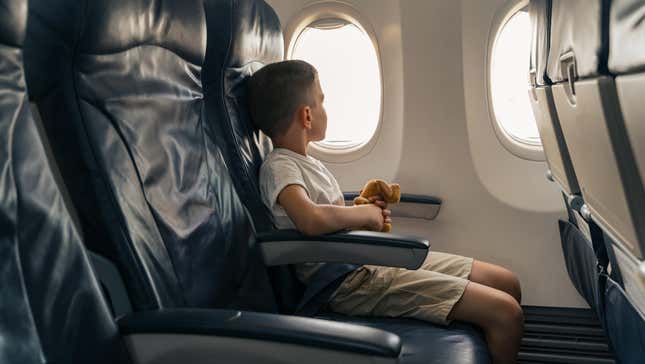
If only there was a Bluey episode for every problem you encounter as a parent to young kids. If only there was a book specific enough to encapsulate your child’s exact anxieties about a new scenario. But maybe there is: “Social stories,” a tool used by mental health professionals like psychologists and occupational therapists, are a way to personalize your child’s situation and turn it into a story that can help them navigate new experiences.
What are social stories?
Social Stories were created by Carol Gray, who defines them as “a social learning tool that supports the safe and meaningful exchange of information between parents, professionals, and people with autism of all ages.” Gray describes herself as a “Consultant to Children, Adolescents, and Adults with Autism,” who “provides support via workshops and presentations, information, referral, resources, and direct services to individuals with autism, their families, and professionals who work on their behalf.” (Note that many people prefer to be referred to as “an autistic person” vs. “someone with autism” and you will see the first usage from here on out.)
“Social Stories” when capitalized, refers to the trademarked materials Gray creates, which meet Gray’s set of ten definition criteria. When we refer to social stories (uncapitalized), we are using Gray’s concept and adapting to our own uses. These less formal social stories are personalized, usually illustrated books you can make for or with any child, not just autistic children, to help them cope with a transition, learn about a new concept, or practice a social skill in a safe, fictional space. People find these stories especially useful for anxious kids, or those who have ADHD, executive function weakness, or other barriers to their attention or learning.
How social stories can be a useful tool
You don’t have to be a mental health professional to make and use social stories. “Social stories allow kids to understand new ideas or plans in their own time, which often helps to keep their anxiety low while processing new information that may be anxiety-provoking,” says Dr. Emily W. King, a child psychologist and former school psychologist. Instead of merely explaining a new concept to a child or springing it on them, King says, “I use social stories when I’m trying to help a student become more independent with a skill or to process a change without the demands of verbal language or another person’s time frame” or to “process big feelings about hard situations.” Being able to look at a visual like a book and revisit it helps many children take in information and react to it in a way that works for them.
Much like a Bluey or Daniel Tiger’s Neighborhood episode, social stories work for many types of scenarios your child may struggle with or need getting used to such as:
- The first day of school
- Traveling on a plane for the first time
- Preparing for a medical procedure
- Death and memorial service of a loved one
- Staying with a new babysitter
- The birth of a sibling
Anything your child experiences can make for a good social story. “Social stories can help ease a child’s mind about what’s to come so they can imagine what the situation will be like through a story and pictures about them before they are in the situation in real-time,” King says.
How to make a social story
To make your own personalized story for your child, first identify the issue you’d like to work on with them. Gray’s Social Stories are all told from the child’s point of view, which is usually most effective, though you can also use a familiar character, toy, or other avatar. King says, “It’s important to imagine the situation from your child’s perspective, walk them through the steps in a story, include how they might feel, how they can cope with how they feel, and how they will feel when they get to the end of the story.” Going through each step helps reduce children’s anxiety and makes them feel like they are capable of handling the situation.
Use illustrations, especially because many children who would benefit from social stories may not yet be reading. You can print out clip art, draw, or use photos of your child and other familiar things, to make it as personalized as possible. “For traveling, it can be helpful to create a digital social story kids can scroll through, which is easy to create through social story apps,” King says. Making a digital copy also helps so multiple caregivers can have the story at their fingertips or in case the physical copy gets ripped or soiled.
Your child may want to help make the social story together, which can be empowering for them. Once you have your social story, read it together, have your child share it with other caregivers, friends, or siblings if they want to, and re-read as many times as they like. Change or update it as needed. An effective social story will help your child visualize an experience or situation and feel less anxious, more prepared, and more regulated.
